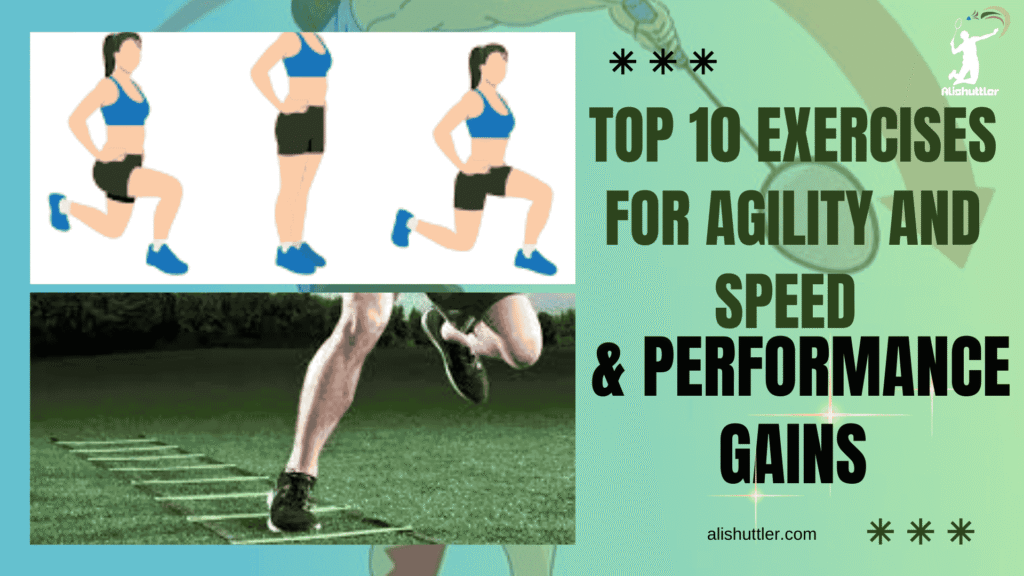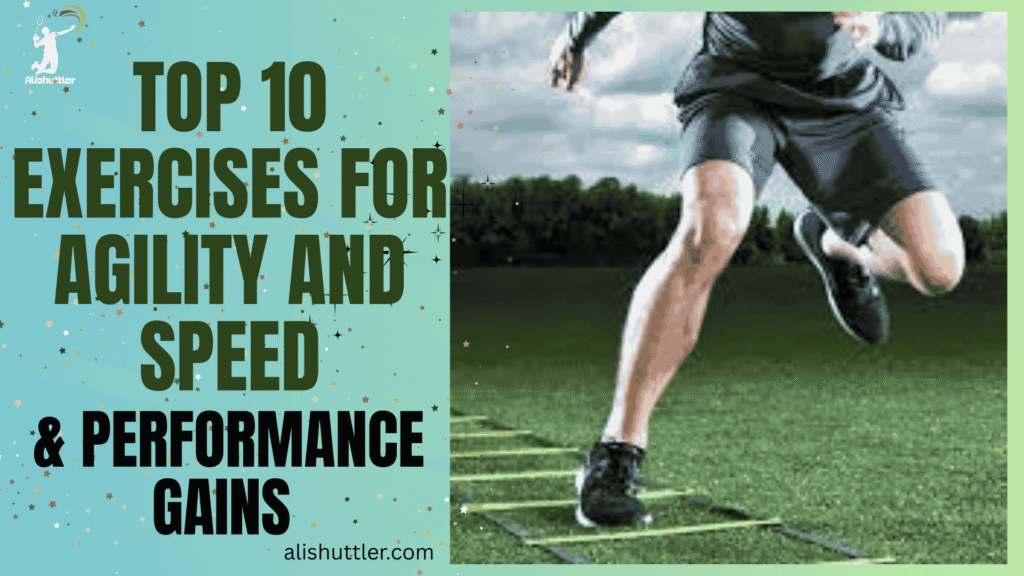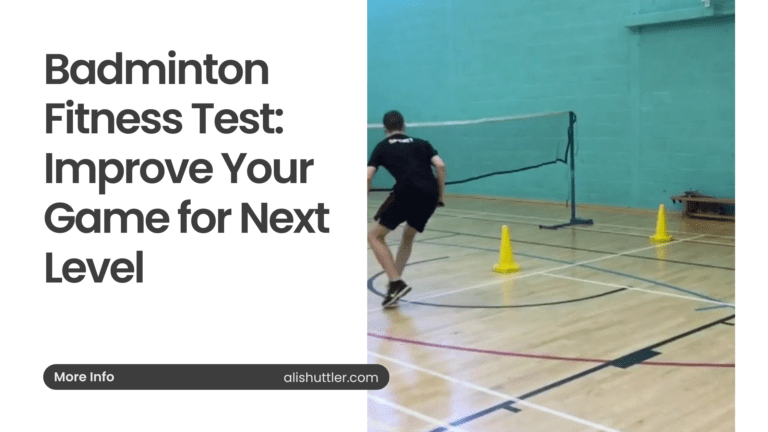Agility and speed stand for sudden maneuvers and rapid turning, whether on the playing field, in the workplace or in our everyday lives. Most teams use both to hit objectives, reduce lag, and adapt to change.
Quick jabs aid in thinking through problems, nimble pivots keep teams open and prepared for change. Both count for teams eager to address new demands, outrun competitors, or deal with difficult projects.
The following sections deconstruct what makes these skills exceptional.

Defining The Concepts
Agility and speed both define athleticism, but they aren’t the same thing. Speed is how quickly you can go in a straight line; agility is the ability to quickly alter your direction or body position with control. In athletic endeavors, these attributes make athletes shine, be it running a track or dodging defenders. While speed and agility provide athletes a distinct advantage, their influence manifests in daily tasks and fundamental fitness.
How these concepts interact can transform a game, optimize a workout, and even prevent injury.
1. The Physics
Speed and agility BOTH depend on the laws of motion! Pace refers to how fast a body traverses a given distance, in meters per second. Agility adds the capacity to change direction or start and stop quickly, which involves both acceleration (how fast you achieve top speed) and deceleration (how fast you can slow down or stop).
Velocity, encompassing both speed and direction, provides a complete description of athlete’s movement during a match or race. Push and pull determine speed and deftness. A sprinter needs to fight against the ground to gain speed, a soccer player against inertia in their pivot to elude an opponent.
Sprinting and agility require powerful ground contact, rapid take-offs and abrupt stops. Body position counts – a low center of mass aids balance on sharp turns. Fast swimming is more economical swimming, and that economy can be the difference between victory and defeat.
2. The Biomechanics
Stride length and step frequency determine running speed. The larger and quicker the steps, the greater the speed. Muscles and joints factor in as well. The stretch-shortening cycle, in which muscles rapidly lengthen and shorten, propels quick and agile actions.
Accurate joint angles and aggressive core control assist with rapid direction changes, particularly when slowing down and then accelerating again. It’s important to stay safe. Good biomechanics reduce the likelihood of injury when training for speed and agility.
Training must push the body slowly—something called progression—to develop strength and control. Fundamental skills such as maintaining a low center of gravity and stable trunk enable the athletes to execute turns or stops without sacrificing velocity.
3. The Neurology
The brain has a lot to do with fast gestures. Rapid response and last-moment decisions rely on neural circuitry that connects the brain to the muscles. Agility drills and speed workouts construct these pathways, enabling athletes respond more rapidly in actual games.
Decisions matter. The quicker the brain can do the conversion to understanding what’s going on, the faster the body can take action. This holds in sports such as basketball, where a player must be able to duck and run on a moment’s notice.
Thinking + Moving Training Gets Faster Brain & Body.
4. The Application
Soccer, basketball, tennis all require speed and agility. A soccer player, for instance, runs then cuts left or right. A basketball guard leaps, lands, and pivots around a defender.
In business, being fast and agile means you can outrun and outfox the competition. They even have drills for both in training programs. Coaches leverage these concepts to develop beefier, brainier athletes.
Fresh methods and drills assist players of all ability levels. When we define the concepts of speed and agility clearly, it helps us coach them better, play safer, and improve consistently.
The Synergy
Agility and speed are connected in more than just motion. When athletes engage in agility training exercises, they experience improved performance. Agility is not only about moving fast but about pivoting with ease. Speed is how fast you can get there. Together, these two skills push athletes to move not just faster but smarter and more aligned with their objectives.
Speed training can make you more agile, and incorporating saq training can help you move faster. They don’t just become faster; they learn to change direction with less effort, such as soccer players who do shuttle runs. This type of conditioning develops muscle memory, so that movements become fluid and rapid.
In basketball, players who do sprints and ladder drills find they can evade defenders and get to the basket quicker. The two skills synergize, assisting athletes in sports requiring quick sprints and hard stops, enhancing their overall performance.
Sprinkling in some agility and speed drills into a workout plan brings out the best in athletes. Cone weaves, short sprints, and reaction games are drills that help players from all kinds of sports. These drills assist the brain and body to work in tandem, improving their movement skills.
Take rugby, for example, where athletes have to sprint then change direction in an instant to evade tackles. Each workout that combines both skills provides athletes with a greater ability to respond, adjust, and score.
Tennis, hockey, and track all demonstrate the synergy of agility and speed. In tennis, you have to sprint to a ball at the outer limit of the court and then return to the center in seconds. In hockey, players skate flat out and have to change direction to pursue the puck.
Even in relay races, sprinters have to pass the baton quickly and remain on course, combining speed and quick feet. This notion of synergy isn’t unique to sports.
In medicine, it unites innovation and expert attention. Radiation therapy pairs cutting-edge systems such as 3D image guidance, IMRT and IGRT to treat cancer with greater precision. The Agility MLC’s rapid-fire leaves assist provide powerful jumps in a flash, demonstrating the convergence of tech and talent.
These systems customize radiation beams to a 40 x 40 cm field, making treatment truly personalized for every patient. Many believe that this mix of tech, expertise, and bedside attention is crucial to improved outcomes in sports performance and overall health.

Training Principles
A well-structured approach to agility training and speed training begins with clear evaluation. Understanding your current performance level helps shape the training program, ensures safety, and makes improvements visible over time. By focusing on individual needs, the path from beginner to advanced in agility training exercises remains steady and on-point.
Assess First
Pre-tests established the baseline for both agility and speed. Tests such as the 5-10-5 shuttle and 30 meter sprint give you quantifiable figures that you can utilize to identify strong and weak areas. Measuring stride length and stride rate reveals which side of sprinting requires additional effort.
Monitoring stride rate, stride frequency and sprint technique provide the full picture, from your body’s movement patterns to your power output. These tests aren’t just for the elite athletes – they work for everyone, and routine testing means you can identify progress or plateaus early.
Progressive Overload
Progressive overload is just the idea of gradually increasing the difficulty of your training. This could include sprinting drills at a faster pace, making your cuts sharper, or incorporating resistance bands. For instance, begin with basic ladder drills, then progress to multi-directional cone drills that introduce changes of direction and re-acceleration.
This slow bump-up in intensity allows your nervous system and muscles to acclimate. It prevents injuries, particularly when you monitor training loads closely. Over time, this builds up neural drive and warms up the hip and knee musculature for the stretch-shortening cycle.
Good programming here avoids overuse problems that can accompany high velocities.
Sport Specificity
Train to your sport. A soccer player might require rapid turns and short sprints, while a basketball player profits from rapid stops and lateral shuffles. For runners, working on straight-line speed and stride length is critical.
In tennis, for example, agility ladder drills and reaction cone work can develop the proper movement capabilities. By emphasizing these sport-specific drills, players practice skills that actually count in games. This emphasis ensures your training time pays off where it matters most—on the field or court.
Top 10 Exercises
What you need are the best agility and speed exercises for these skills. Ladder drills, cone drills and shuttle runs increase reaction and foot speed. Sled pushes, resisted sprints, and box jumps train neural activation and power.
Plyo lunges assist the stretch reflex. Lateral bounds train change of direction. Skater hops and single leg hops test balance and explosiveness. Each exercise accommodates multiple ability levels—newbies take it easy, experienced athletes introduce additional resistance or increased velocity.
These mixed into normal training tackles everything from stride rate to multi-directional agility, engaging Type IIb muscle fibers for genuine speed.
Top 10 Exercises
Agility and speed are more than how quickly you can move, they’re about how quick you can think and react. The connection between brain power and athletic prowess manifests itself most in sports that require quick directional changes or rapid decisions. Fast thinking, in turn, enables athletes to initiate, halt or change with minimal wasted motion.
Both mind and body training combined deliver better results than either alone. Shuttle runs are among the top exercises for developing speed and agility. They train the body to sprint, arrest, and sprint again. This drill employs quick sprints between two points, compelling the mind to remain agile and the body poised to pivot at a moment’s notice.
Plyometric jumps demand power and balance. This body weight exercise, which involves jumping side to side over a line or object, builds muscle and keeps the brain focused on landing clean and not losing form. L Drills (or Cone Drills) had cones arranged in an L-shape, requiring the athlete to sprint, cut and shuffle.
The trick is in reading the pattern and gliding clean from one to another, which keeps the mind as much on its toes as the feet. Plyometric jumps—squat jumps, tuck jumps, etc develop power in the legs for explosiveness in starting and stopping. These drills are brief but vigorous, conditioning muscles to blaze rapidly.
Agility balls, or reaction balls, bounce in random directions, requiring the eyes and hands to follow and catch quickly. This drill is excellent for sports that require rapid reflexes, such as tennis or football. Dot drills use small markers on the ground, with the athlete jumping or stepping between them in set patterns.
This assists with foot speed and relies on the brain to remember what to do next. Hurdle jumps employ small barriers to condition jump height and safe landings. The drill is scalable in difficulty, as you can make it harder or easier by adjusting hurdle size or spacing, so it’s appropriate for any level.
All these exercises stretch both the mind and the body, proving that quickness isn’t just in your legs but in your head. Incorporating these into a training regimen a couple of times a week is great for developing skill, quickness, and the ability to react in the moment.
The Cognitive Link
Agility and speed aren’t just about muscle or motion. They begin in the mind. The connection between the brain and body is the cognitive link. This link orchestrates response time, judgment, and agility. In sports or life, cognitive and physical loading counts.
Research indicates that cognitive and motor abilities are related, and both are susceptible to fatigue, anxiety, and the intensity or duration of practice.
Reaction Time
Quick reflexes are the name of the game in sports performance. It means visualizing or feeling something, and then acting as fast as you can. In football, that might be a goalie responding to a shot, while in tennis, a player returning a serve. Fast reflexes can be the difference between victory and defeat, highlighting the importance of agility training exercises.
Many factors shape reaction time: genetics, age, sleep, and even stress levels. That said, practice is essential. Only repeated drills and focused practice, such as SAQ training, make the body and mind work faster together.
Basic exercises, like ‘start on a whistle’ or a light that indicates a move, generate quicker reactions. Harder drills, such as responding to a coach’s random directive or utilizing reaction balls, challenge the brain and body. These agility training exercises mimic actual game pressure and keep the player alert.
Research even indicates that active breaks with fast movements can aid more than simply sitting between sets. This validates the concept of integrating mental and physical training into a comprehensive training program.
Decision Making
Making wise decisions quickly is as important as moving quickly. For example, in basketball you might need to decide in a split second whether to pass, shoot, or dribble. Training can assist here as well.
Coaches employ game-like drills in which players need to identify cues and switch their action on the fly, such as ‘keep-away’ games or small-sided games. These drills develop cognitive agility and allow players to manage the cognitive overhead of quick decisions and fast movement.
When the mind flags, the body lags. Cognitive depletion due to difficult cogitation or grueling practices can decrease output. This is known as motor-cognitive interference.
Research demonstrates that the more involved the test, the less the brain and body work in concert, illustrating how intricate the mind-body connection is.
Visual Scanning
Observing what’s going on around you is a major component of quickness and nimbleness. Athletes scan the field to follow the ball and players. Good vision makes for strong moves.
Training vision can be simple tracking drills, like tracking a moving object, or more sophisticated tools like light boards. Peripheral vision assists players in responding to objects they can’t face directly, such as a runner checking out a defender.
Coaches frequently employ drills where players monitor multiple objects in motion or respond to field shifts. These drills advance both keen attention and broad insight. They are employed in team sports and individual ones.
Beyond Sports
Speed and agility aren’t just for pro athletes. They assist in everyday life, such as navigating a bustling avenue, engaging with children, or participating in a pick-up game.
For rehab patients, agility drills assist with balance and mobility following injury. Fitness programs have begun including these skills to be generative movement in all ages.
Beyond The Field
Agility and speed are not only sculpted in drills or during training sessions but also hinge on off-the-field decisions, including nutrition and rest. For athletes aiming to enhance their first-step quickness and incorporate agility training exercises, it is crucial to examine every facet of their training program, including saq training and conditioning strategies.
Nutrition
Food is gas. For athletes, what you put in is just as important as how hard you train. Carbohydrates provide rapid fire for dashes and ninja moves. Proteins assist muscle repair after hard sessions, and fats provide a consistent fuel source for extended activity.
The proper blend maintains quick reaction times and assists in rapid direction changes. Vitamins and minerals such as iron and calcium aid muscle work and bone strength. Hydration is a big factor, as well. Even mild dehydration can decelerate reflexes and sap athletes’ energy.
Timing and what you drink are important, with drinking adequate water pre-, during and post-workouts key, particularly in hot weather or long training days.
Recovery
Recovery is not a hiatus, it’s integrated into the project. Quick moves and sudden turns strain muscles and joints. Without quality recovery, injury risk increases and performance decreases. Active recovery like light jogging or easy cycling, moves blood and clears muscle waste.
Stretching keeps muscles limber and prepared for the upcoming session. Rest days are important. Sleep allows the body to repair muscle fibers and replenish energy. Most professionals recommend a minimum of 7-9 hours a night for adults.
Recovery tools like foam rollers or compression gear can assist as well. Fitting recovery into training is as critical as the drills themselves.

Technology
Tech has transformed how athletes train for speed and agility. Wearables trace steps, heart rate, and even how strongly a player pushes off each foot. Video analysis allows athletes to observe their technique, identify weaknesses, and master new skills more quickly.
Apps provide drills working on hip flexion, hip extension, and first-step quickness—abilities that separate good players from game changers. Insights from these devices assist coaches and athletes in discovering what works, tweaking plans, and preventing overtraining.
Adopting tech provides athletes a real advantage.
Final Thoughts
To develop speed AND agility, begin small and expand. Use basic drills such as short sprints, jumps, and sharp turns. Keep your wits nimble with fast games. Both the mind and body play a large role. Athletes, workers, and really anybody who’d like to move better can apply these concepts.
These skills come in handy in sports, in everyday life, and even in the office. A quick footstep can signify reduced hazards or increased opportunities. Experiment with new moves, persevere, and vary your routine. Share your wins or tips in the comments, or request ideas if you want to dig deeper.
Frequently Asked Questions
What is the difference between agility and speed?
Agility training involves changing directions quickly, while speed reflects how fast an athlete can accelerate in a straight line, both crucial for performance.
How do agility and speed work together in sports?
Agility training and speed are crucial for athletes to react quickly and execute efficient movements, enhancing performance while minimizing injuries during agility training exercises.
What are the best exercises to improve agility and speed?
The best drills for agility training include ladder drills, cone drills, plyometric jumps, shuttle runs, and sprints, focusing on coordination and burst performance.
Can anyone improve their agility and speed?
Yup, anyone can enhance their agility and speed with saq training. Not limited by age, background, or fitness level, the right agility training exercises and drills are the key.
How does the brain affect agility and speed?
The brain thinks and pumps out fast instructions to the muscles, requiring agility training exercises to enhance quick reactions. To pull off an agile and speedy move, I’d need to be mentally sharp.
Why are agility and speed important beyond sports?
Agility training and speed enhance everyday movements like sidestepping hazards or turning quickly, promoting balance and coordination while minimizing the risk of falls.
How often should I train to see improvement?
Training 2–3 times per week with targeted agility training exercises makes progress inevitable, as regularity and relaxation strengthen both speed and agility.






